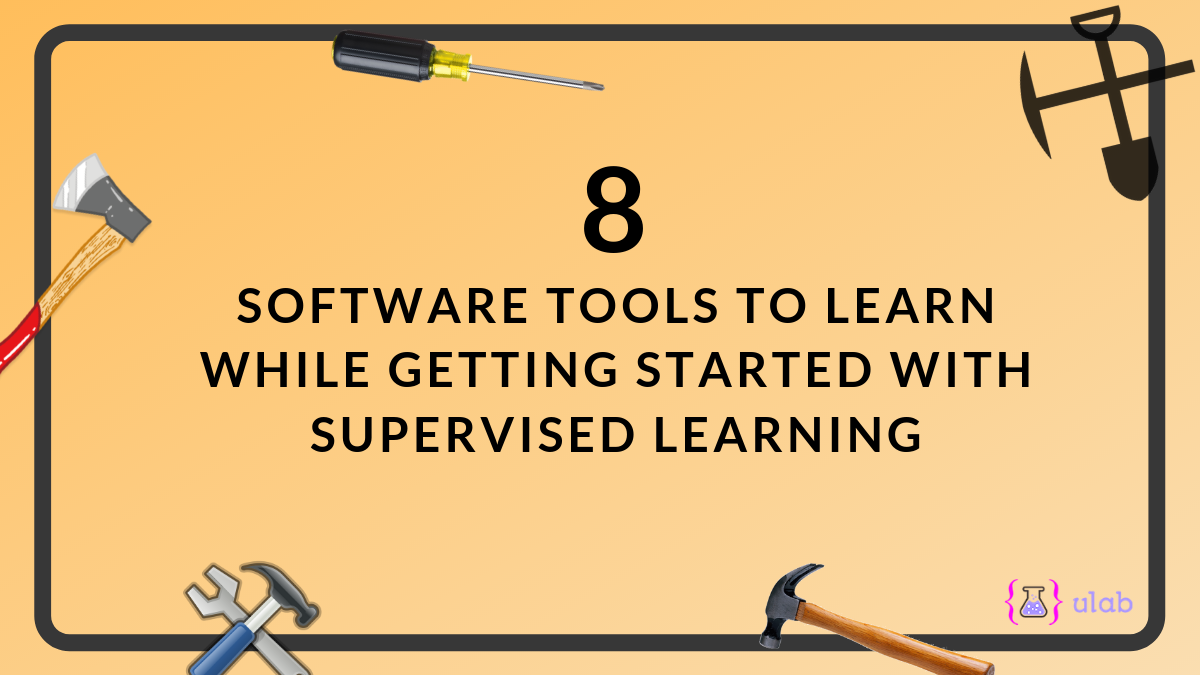8 Software Tools To Learn While Getting Started With Supervised Learning

Given the number of opportunities Supervised Machine learning has opened up, IT enthusiasts all over the world are reaching out to learn more about how to get involved in the field. With data being the new fuel for a business, you need tools which can help you take full advantage of this data and professionals who can perform the task without any glitch.
Now, while people belonging to the industry are very well versed with the processes, and advantages of data extraction, it is the non-technical crowd that needs to be trained on know-hows and technical details of programming tools. Here’s a list of programming tools you can train on while starting with Supervised Learning:
1. DataRobot
An automated Machine Learning platform, DataRobot was introduced to build and deploy accurate ML models within a fraction of time, irrespective of the level the user belongs to.
How it works: DataRobot automatically detects the best data processing and feature set. It can employ encoding, scaling, text mining, imputations etc. When data set is very large, DataRobot uses distributed algorithms to scale up the data set.
2. Tableau
Proved to be one of the best business intelligence and visualisation tool in present scenario, Tableau can create graphs, charts, maps and other statistical concepts to understand supervised learning within a small time period.
How it works: A number of data sources can be connected to this tool for it has multiple options to represent data in different views. It can create sets, apply filters, generate trending lines, forecast and any other task required for visualization. While Tableau is free to use, it is recommended that you install the Premium version, considering the free version offers limited controls.
3. Google Cloud AutoM
Google Cloud Ml is an array of ML products that train high-quality, custom Machine learning models with minimum effort. In doing so it leverages Google’s state-of-the-art transfer learning and Neural Search technology.
How it works: It provides a simple GUI for the users to train, improve and deploy models based on existing data. The data can be stored on cloud storage by you or previous users. Use the existing Vision API and add a custom model, to generate a prediction for the model you trained on.
4. Rapid Miner
Started as an open source in 2006, RapidMiner has journeyed to become one of the best data mining tools presently. RapidMiner server encourages team collaboration, hence making project management, and model deployment easier. With a complete coverage of each stage of prediction modelling (that includes data preparation, data validation, and deployment) RapidMiner makes it comfortable for users by working on block diagram interface.
How it works: There is a cloud-based repository called RapidMiner Cloud, and a stand alone software-RapidMiner Studio, which make data preparation and visualization, as well as modeling, simpler for the users.
5. Fusioo
From what reputation goes, Fusioo is a simple, and one of the easiest software for a beginner, or someone without any idea of using database software.
**How it works: ** A database application for the masses, Fusioo allows you to invite external collaborators or clients without incurring extra charges. You collaborate towards a common cloud and the results are generated automatically trough algorithms.
6. BigML
BigML is a comprehensive ML platform that provides selection of algorithms involving a single, standardised framework to solve real world problems.
How it works: It takes the user through a step-by-step process. Starts with sources, datasets, models and ends with predictions, ensembles, and evaluation. Thanks to the varied range of BigML algorithms, solving machine learning problems like classification, regression, association, clustering, and discovery is no longer an issue.
7. DataWrapper
Datawrapper is an open source platform that helps you generate visualisations like line graph, bar graph or interactive charts. It requires no prior skills or training. In fact, a good numbers of News agencies use Datawrapper to represent charts or results of a survey.
How it works: Functionality is provided by plugins. You need to copy and paste your data to live charts, visualise it by choosing the type of chart of your choice, and finally publish the readymade chart as an image or pdf.
8. Amazon Machine Learning (AML)
Popular as a robust and cloud-based ML software, AML can be used by developers of all skill levels. Because AML integrates data from multiple sources like Amazon S3, Redshift or RDS it supports there types of models- Binary classification, Multi-class classification, and regression.
How it works: AML permits users to create a data source object from My SQL database. Fundamental Statistical concepts are then derived through ML models, Evaluations, Batch and real time predictions.
In the midst of what Supervised learning has to offer, there are a number of non-programmers who aren’t aware of the technical skills required to code. These supervised learning tools are for those who are not fluent in programming.
Which of these tools have you used or would like to use? Let us know in the comments below…

